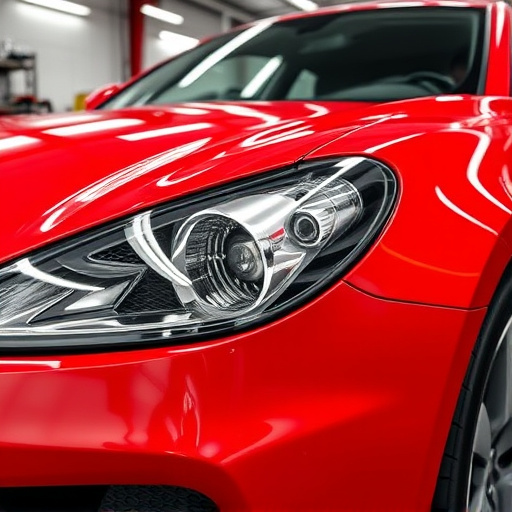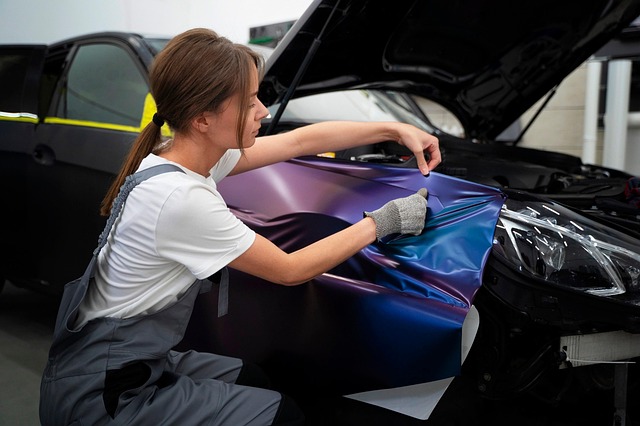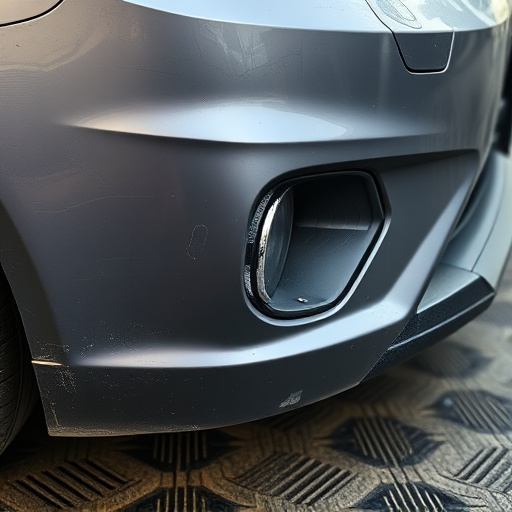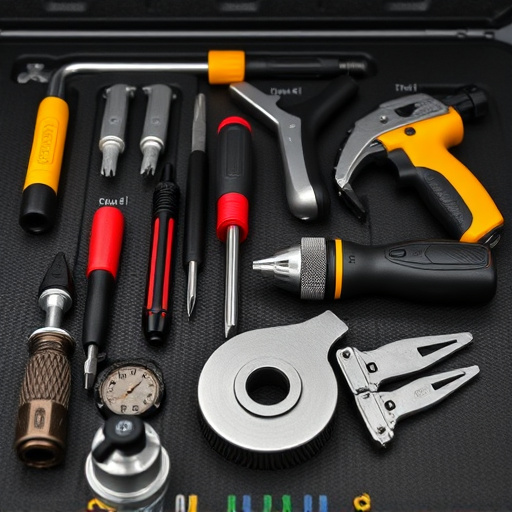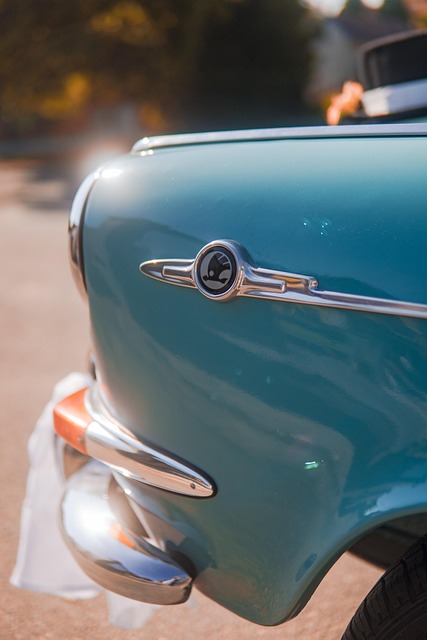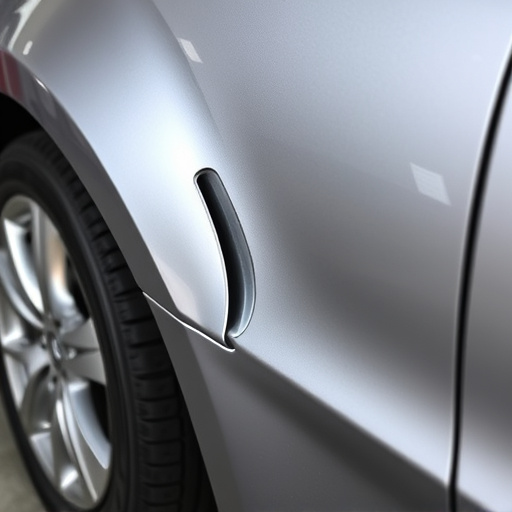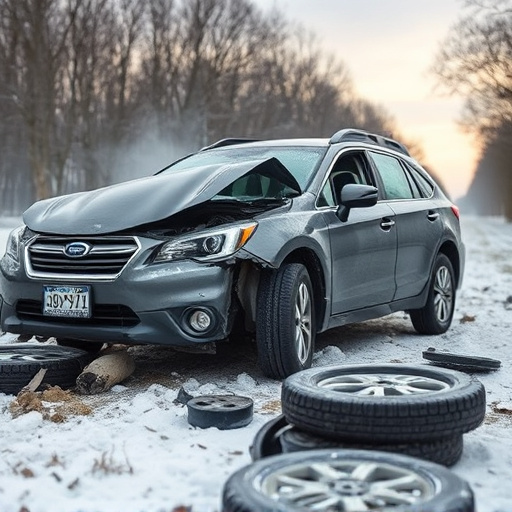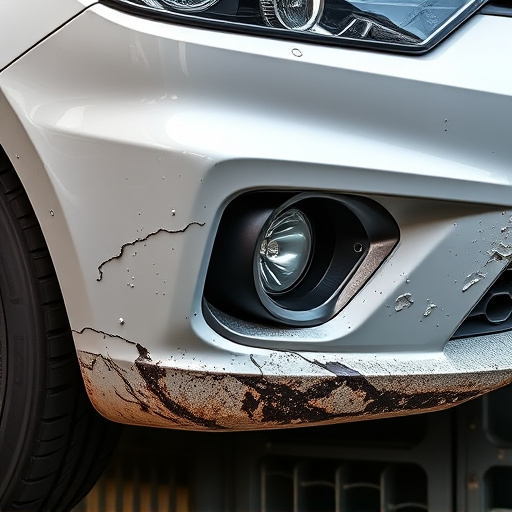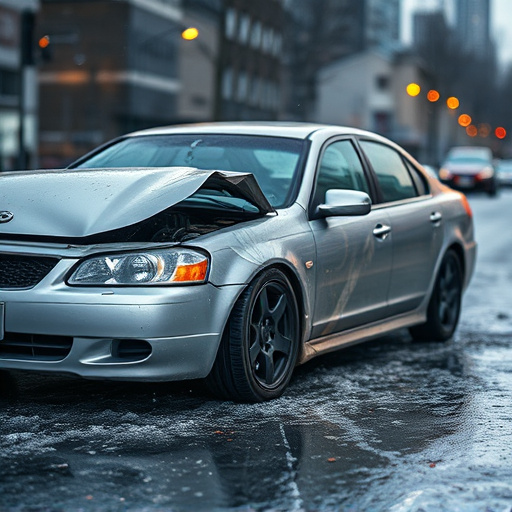Vehicle restoration services prioritize safety upgrades with modern technology like advanced airbag systems, anti-lock braking (ABS), and electronic stability control (ESC) to enhance overall vehicle security. They employ paintless dent repair techniques for aesthetic restoration while ensuring compliance with industry standards. Safety is paramount, with restorers utilizing PPE, specialized tools, and proper ventilation to mitigate risks during intricate auto bodywork tasks. A collaborative approach involving project managers, skilled technicians, and quality control specialists, supported by clear communication, training, and signage, ensures safe practices and top-notch restoration outcomes.
Vehicle restoration services aren’t just about breathing new life into old cars; they prioritize safety upgrades to ensure every restored vehicle meets modern standards. This comprehensive guide explores the crucial role of safety enhancements in vehicle restoration, highlighting why they’re essential. We’ll delve into common safety features, the roles and responsibilities within these services, and provide insights for anyone considering a restoration project, emphasizing the seamless blend of historical preservation and contemporary safety measures.
- Understanding Safety Upgrades: Why They're Essential in Vehicle Restoration
- Common Safety Features to Expect During a Restoration Project
- Ensuring Safe Practices: Roles and Responsibilities in Vehicle Restoration Services
Understanding Safety Upgrades: Why They're Essential in Vehicle Restoration

In the realm of vehicle restoration services, safety upgrades are no longer an option—they’re a necessity. As cars age, their structural integrity and safety features may degrade, making it crucial to incorporate modern advancements during the restoration process. These upgrades not only enhance the overall safety of the restored vehicle but also ensure it meets current industry standards and regulatory requirements.
One prominent example is the integration of advanced airbag systems, which can significantly reduce the risk of injuries in case of an accident. Additionally, incorporating features like anti-lock braking systems (ABS) and electronic stability control (ESC) improves handling and braking performance, making the vehicle safer to drive. Moreover, services such as paintless dent repair and car dent repair techniques not only restore the aesthetic appeal but also maintain structural integrity, ensuring that every part of the auto bodywork is in optimal condition.
Common Safety Features to Expect During a Restoration Project

During a vehicle restoration project, safety is paramount, especially with the numerous intricate tasks involved in auto bodywork. The restorers employ various common safety features to safeguard both the technicians and the vehicle itself from potential hazards. These include state-of-the-art personal protective equipment (PPE), such as gloves, goggles, and respirators, designed to shield against debris, chemicals, and harmful fumes.
Additionally, modern workshops are equipped with advanced tools for precise cutting, welding, and sandblasting, minimizing the risk of errors that could lead to accidents or structural damage. Proper ventilation systems also play a crucial role in vehicle restoration services, ensuring hazardous gases and dust are effectively removed from the workspace. This is particularly important when dealing with old cars, where the presence of toxic materials requires specialized handling techniques and equipment to prevent exposure risks during auto bodywork processes.
Ensuring Safe Practices: Roles and Responsibilities in Vehicle Restoration Services

In vehicle restoration services, ensuring safe practices is paramount to protect both workers and the restored vehicles. Each team member has distinct roles and responsibilities in maintaining a secure environment. For instance, project managers oversee the entire process, coordinating tasks and guaranteeing adherence to safety protocols. Skilled technicians conduct auto body work, leveraging their expertise to safely disassemble, repair, and reassemble vehicle components. Meanwhile, quality control specialists meticulously inspect every detail, ensuring that the final product meets not only aesthetic standards but also rigorous safety requirements.
Effective communication and training are key to these roles. All personnel must be trained in hazard recognition and safety procedures specific to vehicle restoration services. Regular meetings and clear signage further reinforce safe practices within the body shop services environment. This collaborative approach, where every individual understands their part in the process, is essential for achieving top-notch results without compromising on safety during auto body work or vehicle collision repair.
When undertaking vehicle restoration services, prioritizing safety is non-negotiable. By integrating modern safety upgrades, restorers not only comply with standards but also enhance the vehicle’s overall performance and resilience. These enhancements include advanced airbag systems, robust structural reinforcements, and improved brake technologies, all of which contribute to a safer driving experience. Moreover, understanding the roles and responsibilities within the restoration process ensures that every step is meticulously executed, minimizing risks and delivering top-quality results. Embracing these safety upgrades is not just a best practice; it’s a crucial aspect of preserving history while ensuring the well-being of vehicle owners and passengers alike.

